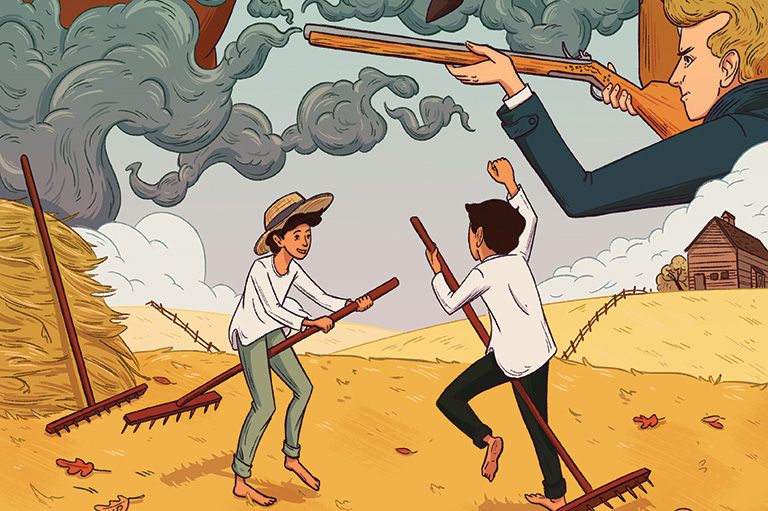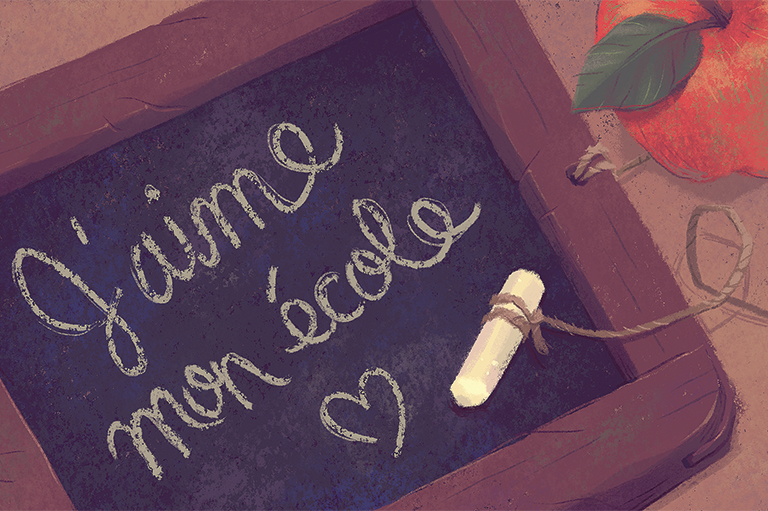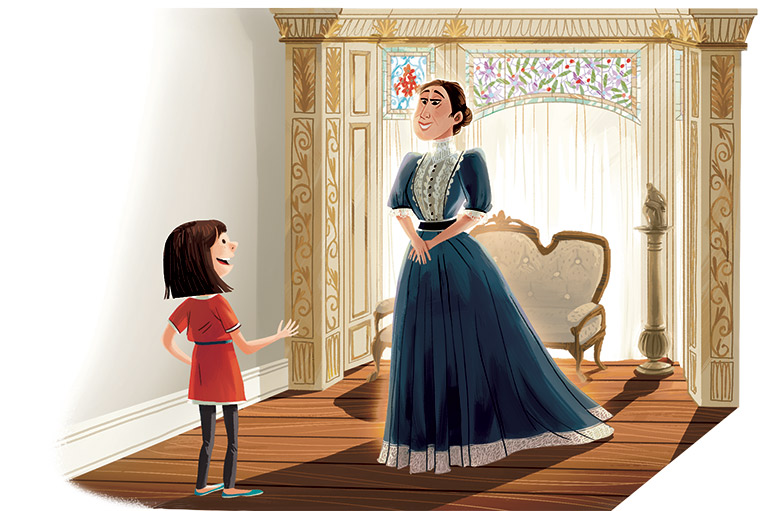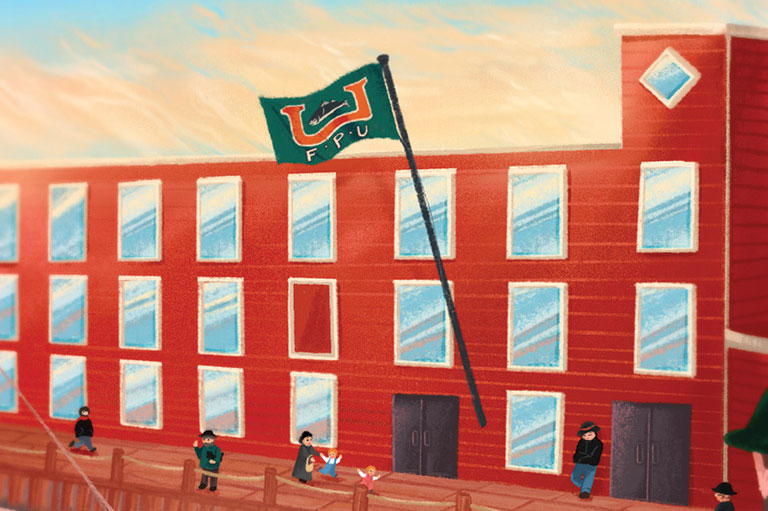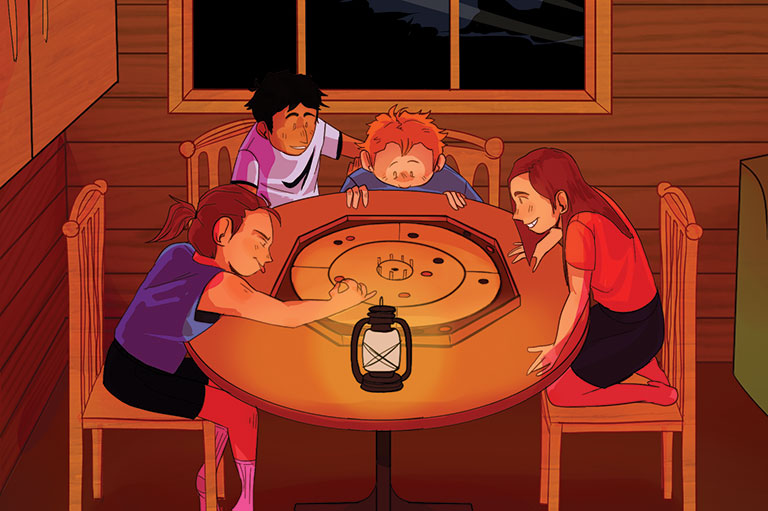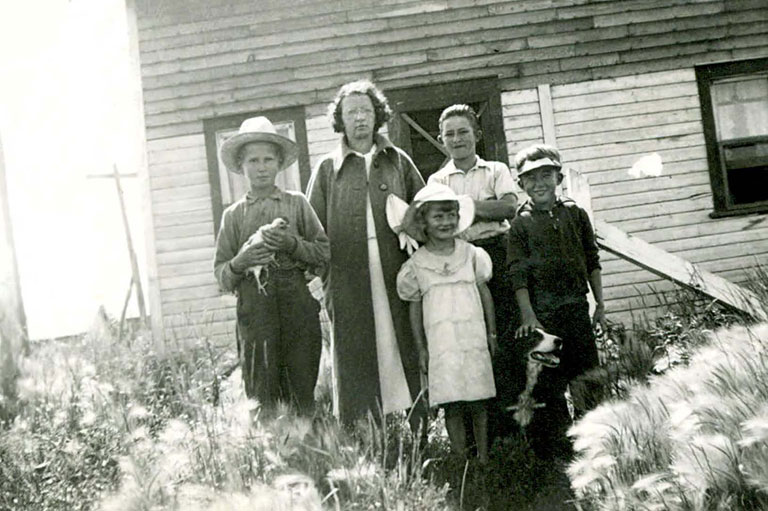The Best Visit
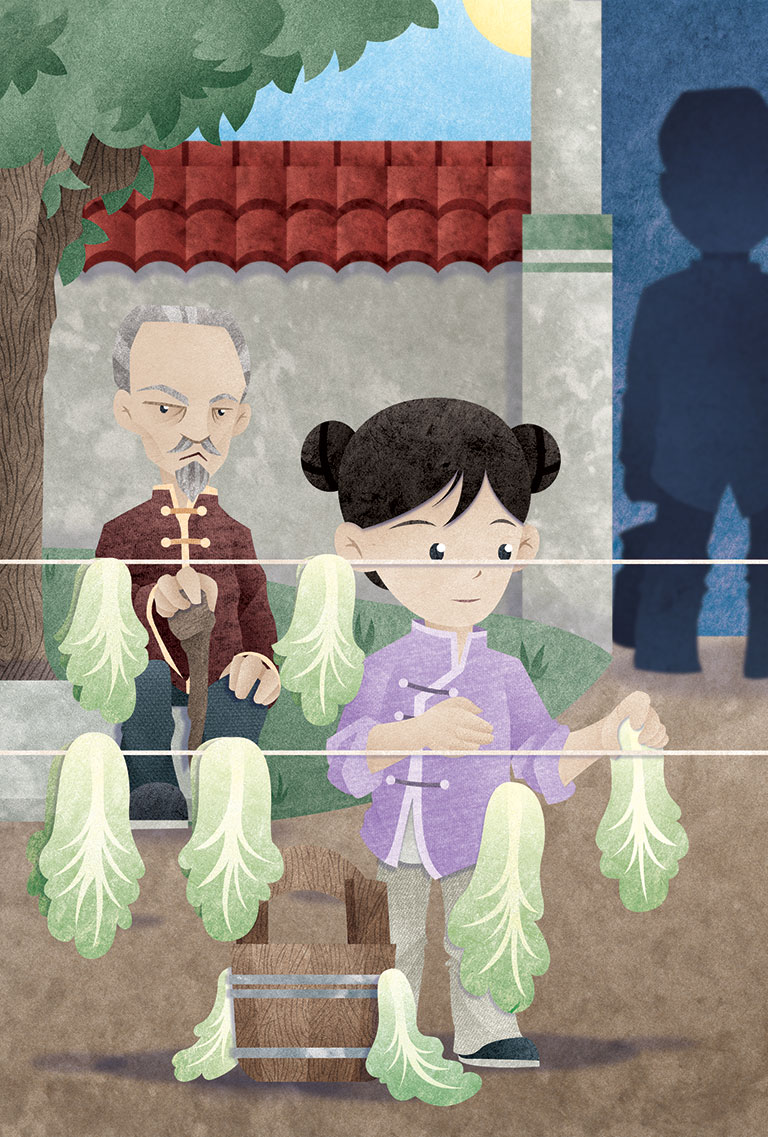
One afternoon in the courtyard, while hanging long leaves of wet green cabbage to dry on lines, I kept dropping them onto the ground.
“Stop staring at the front door!” scolded Ma.
But Ba might walk in! His last visit was four years ago, in 1909, after which Little Sister was born. I kept wondering what gift Ba would bring me.
Last time, it was a set of wooden blocks. Letters and numbers were carved and painted on each side, but I couldn’t read them. Still, all the kids in the village played with them.
My family lived near the port of Hong Kong, so men from my village often sailed to faraway lands for work.
Ma, Little Sister and I stayed home where I helped cook, wash clothes, babysit and tend my grandparents. I had no choice: At age twelve, I was the oldest child.
But I hated how my cousin Kin-man, just a year younger, never had to help — just because he was a boy.
I never told anyone but, in my mind, Ba’s face was hazy, even though I dearly missed him.
“Daughter?” called a familiar voice.
I ran to Ba and inhaled the familiar sweetness of his hair oil.
Before Ma could speak, he asked, “Where’s your Grandpa?” and hurried off.
He should have hugged her first. She missed him more than me but always told me stories about him: His favourite dish was shrimp paste on pork, his voice was rich, but shyness kept him from singing, and he loved reading books.
Grandpa ruled the household with loud voice and stern gaze. Even Uncle Kwok, Ba’s older brother and Kinman’s father, never argued with him.
Grandpa helped harvest each year’s two crops of rice. A few months ago, he wanted to buy land from his friend Old Choy, but Uncle Kwok wanted a field closer to home.
In the end, they bought from Old Choy. I had groaned because it meant a longer walk for me to take food to the people working in the field.
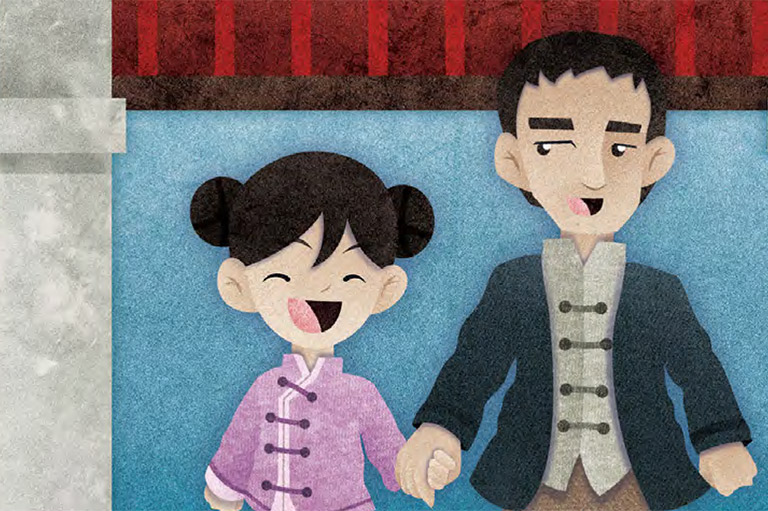
With 7 uniquely curated newsletters to choose from, we have something for everyone.
With Ba at home, friends and relatives came to visit. I served them tea and snacks in the sitting room and heard about his life in Canada.
“The new highway runs from Vancouver to America!” Ba said. “A flier landed a plane at the airfield, the first woman pilot to do so!” “The newest building is seventeen floors high!”
“Can that be true?” asked the visitors. Their eyes widened as they shook their heads.
When dusk fell and the visitors departed, they nodded at Ma and said to Ba, “This time, your woman will give you a son, no?”
Ma reddened and turned away.
“I have two healthy daughters,” Ba said. “I am quite content!”
No, you’re not, I thought, scrunching my face. Ba hadn’t brought me a gift. He said that working at several jobs in Canada meant there was no free time to shop.
When people asked what I had received, I promised to tell them later.
Then, Ba said, “So-lin, come read to me and show me your writing.” I shook my head, puzzled. Read and write? I wish I knew how. Ba frowned.
“Haven’t you been going to school?”
“No,” I mumbled. Ba cursed and stomped off to Grandpa’s room.
I followed, even though Ma said never to listen to other people’s conversations. I couldn’t help myself. This time, it involved me!
“How could you?” shouted Ba. “I sent money for So-lin’s schooling. Instead, you went and gambled it away!”
“Daughters here don’t attend school,” snapped Grandpa. “It’s unheard-of!”
“Girls in Canada get educated,” said Ba.
“Waste of money!” cried the older man. “So-lin will marry into her husband’s village; her schooling won’t help us.”
“It’s not fair that only boys go to school!” Ba protested.
“I mentioned this to the village elders,” roared Grandpa. “They agreed with me!”
At that, I hurried away. Kin-man and his brothers went to school but not the girls around me. Boys ran into the hills to play but not girls. Boys sailed to North America with their fathers and uncles, but girls never went anywhere.
When Ba’s departure time approached, many relatives were invited to a feast at our home. I was dusting furniture when Grandpa grabbed me and slapped me hard. My face stung, but I knew better than to cry.
“What was that for?” demanded Ba.
“Stupid girl didn’t clean my pipe!” shouted Grandpa.
“Grandma said not to,” I said. “She said smoking is bad for you.”
On the morning of his leaving, Ba said goodbye to everyone. He took my hand and we walked to the village gate. When I tried to free my hand, Ba didn’t let go.
“This girl comes with me,” he said to Ma and Grandpa.
“She’s going to Canada and she’s going to school!” This was the best gift of all!
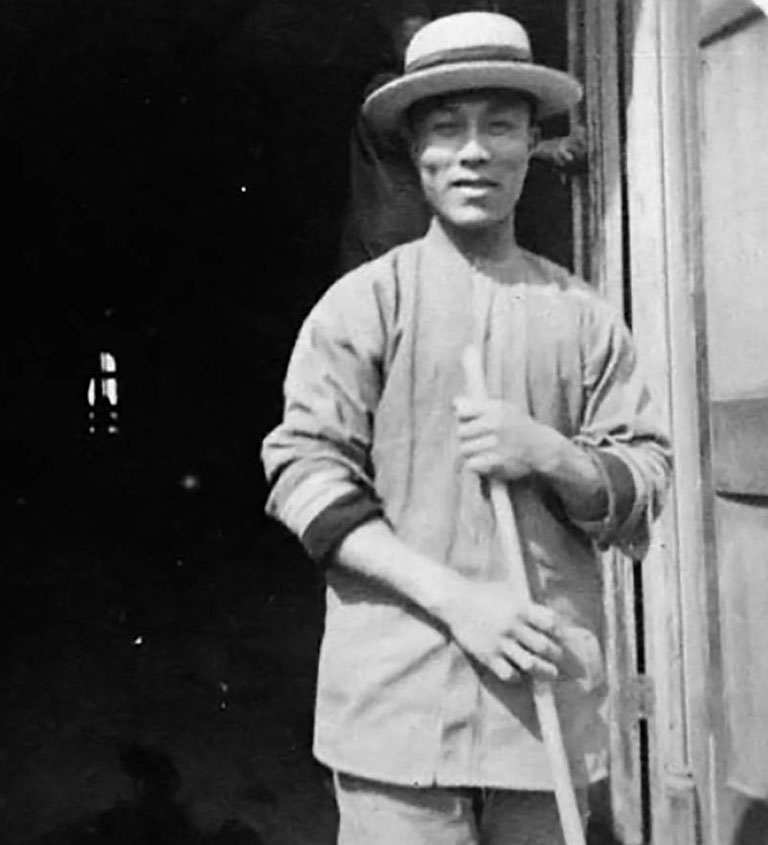
Chinese people started coming to British Columbia in 1858. They were mostly men who planned to send their earnings to their families back home, but this meant the men lived away from their wives and children for a long time, sometimes many years.
This was also a time of slow communication, when it was expensive to share news and information.
Most Canadians of the time did not welcome Chinese immigrants, which caused the Canadian government to try to discourage these newcomers.
In 1885 it started charging a “head tax” of $50 for every Chinese person coming to Canada. This tax rose to $100 in 1902 and then to $500 a year later — about $5,000 in today’s money — which made it difficult for Chinese workers to bring their families to Canada.
Many Chinese immigrants worked at low-paying jobs, and were often paid less than Canadians for the same work. British Columbia would not allow them to take up professions where they could have earned more money.
This made it hard for them to save money for visits to China.
Thanks to Section 25 of the Canadian Charter of Rights and Freedoms, Canada became the first country in the world to recognize multiculturalism in its Constitution. With your help, we can continue to share voices from the past that were previously silenced or ignored.
We highlight our nation’s diverse past by telling stories that illuminate the people, places, and events that unite us as Canadians, and by making those stories accessible to everyone through our free online content.
Canada’s History is a registered charity that depends on contributions from readers like you to share inspiring and informative stories with students and citizens of all ages — award-winning stories written by Canada’s top historians, authors, journalists, and history enthusiasts.
Any amount helps, or better yet, start a monthly donation today. Your support makes all the difference. Thank you!
Themes associated with this article
Advertisement
More fiction features
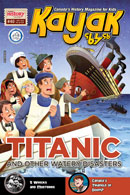
Canada’s History Archive features both English and French versions of Kayak: Canada’s History Magazine for Kids.
Kayak: Canada’s History Magazine for Kids — 3 digital issues per year for as low as $13.99. Tariff-exempt!

